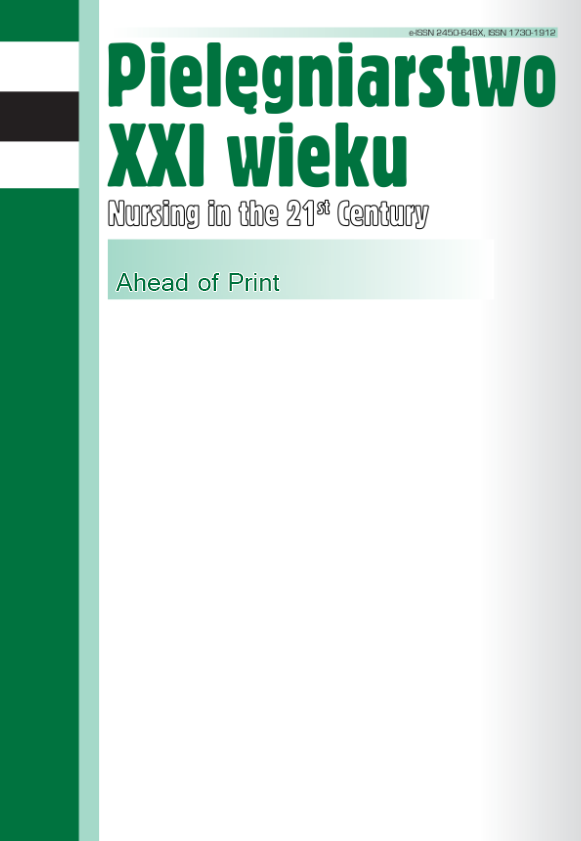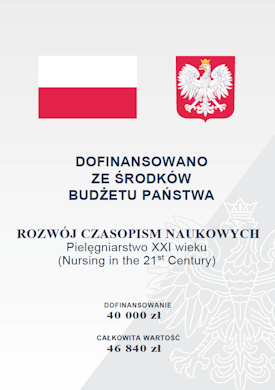Health seeking behavior for influenza management in North Sumatra Province, Indonesia
DOI:
https://doi.org/10.12923/pielxxiw-2025-0012Keywords:
behavior, influenza, Indonesia, self-medication, health seekingAbstract
HEALTH SEEKING BEHAVIOR FOR INFLUENZA MANAGEMENT IN NORTH SUMATRA PROVINCE, INDONESIA
Aim. This study aimed to identify health-seeking behavior for influenza management in North Sumatra, Indonesia.
Material and methods. This study used a quantitative design with a cross-sectional approach. The number of participants in this study was 385, and the sample was taken using convenience sampling. Data was collected using a questionnaire in June 2024 and analyzed using descriptive and inferential statistics.
Results. The results of this study found that the first action when experiencing influenza is to seek treatment from a health professional (49.6%), self-medication (44.7%), rest (3.6%), and visit a traditional healer (2.1%). In the second action, if the first action is considered unsuccessful, the respondent seeks treatment from another health professional (82.3%) and self-medication (17.7%). Demographic characteristics that were significantly related to self-medication included age, education levels, and health insurance.
Conclusions. Many people still self-medicate when they experience influenza. To avoid the negative impact of self-medication, the public needs to be socialized so that they have adequate knowledge about the risks of self-medication. Thus, they can decide to seek medical care for influenza treatment.
References
1. Nypaver C, Dehlinger C, Carter C. Influenza and influenza vaccine: a review. J Midwifery Womens Health. 2021;66(1):45-53. https://doi.org/10.1111/jmwh.13203
2. Eccles R. Common cold. Front Allergy. 2023;4:1224988. https://doi.org/10.3389/falgy.2023.1224988
3. Erbelding EJ, Post DJ, Stemmy EJ, et al. A universal influenza vaccine: the strategic plan for the National Institute of Allergy and Infectious Diseases. J. Infect. Dis. 2018;218(3):347-354. https://doi.org/10.1093/infdis/jiy103
4. Soedjatmiko S, Medise BE, Gunardi H, et al. Immunogenicity and safety of a Trivalent Influenza HA vaccine in Indonesian infants and children. Vaccine. 2018;36(16):2126¬2132. https://doi.org/10.1016/j.vaccine.2018.02.114
5. Putri WCWS, Muscatello DJ, Stockwell MS, et al. Economic burden of seasonal influenza in the United States. Vaccine. 2018;36(27):3960-3966. https://doi.org/10.1016/j.vaccine.2018.05.057
6. Grohskopf LA, Blanton LH, Ferdinands JM, et al. Prevention and control of seasonal influenza with vaccines: recommendations of the Advisory Committee on Immunization Practices – United States, 2018-19 Influenza Season. MMWR Recomm Reports. 2018;67(3):1-20.
7. Li Y, Reeves RM, Wang X, et al. Global patterns in monthly activity of influenza virus, respiratory syncytial virus, parainfluenza virus, and metapneumovirus: a systematic analysis. Lancet Glob Heal. 2019;7:e1031-e1045. https://doi.org/10.1016/s2214-109x(19)30264-5
8. Farida H, Triasih R, Lokida D, et al. Epidemiologic, clinical, and serum markers may improve discrimination between bacterial and viral etiologies of childhood pneumonia. Front. Med. 2023;10:1140100. https://doi.org/10.3389/fmed.2023.1140100
9. Adisasmito W, Budayanti S, Aisyah DN, et al. Surveillance and characterisation of influenza viruses among patients with influenza-like illness in Bali, Indonesia, July 2010–June 2014. BMC Infect. Dis. 2019;19:231. https://doi.org/10.1186/s12879-019-3842-5
10. Oberoi S, Chaudhary N, Patnaik S, et al. Understanding health seeking behavior. J. Fam. Med. Prim. Care. 2016;5:463-464. https://doi.org/10.4103/2249-4863.192376
11. Widayanti AW, Green JA, Heydon S, et al. Health-seeking behavior of people in Indonesia: a narrative review. J. Epidemiol. Glob. Health. 2020;10(1):6-15. https://doi.org/10.2991/jegh.k.200102.001
12. Clewley D, Rhon D, Flynn T, et al. Health seeking behavior as a predictor of healthcare utilization in a population of patients with spinal pain. PLoS One. 2018;13(8):e0201348. https://doi.org/10.1371/journal.pone.0201348
13. Aggarwal R, Ranganathan P. Study designs: Part 2 – Descriptive studies. Perspect. Clin. Res. 2019;10(1):34-36. https://doi.org/10.4103/picr.picr_154_18
14. Israel GD. Determining sample size. Tech Rep No PEOD-6 Florida Univ Florida, Inst Food Agric Sci. 2003.
15. Keshvari N, Yousefi N, Peiravian F, et al. Exploring health seeking behaviors for common cold management. Explor. Res. Clin. Soc. Pharm. 2023;11:100301. https://doi.org/10.1016/j.rcsop.2023.100301
16. Ng’ambi W, Mangal T, Phillips A, et al. Factors associated with healthcare seeking behaviour for children in Malawi: 2016. Trop. Med. Int. Heal. 2020;25(12):1486-1495. https://doi.org/10.1111/tmi.13499
17. Morgan GA, Barrett KC, Leech NL, et al. IBM SPSS for introductory statistics: use and interpretation. 6th ed. New York: Routledge; 2020.
18. Bertsche T, Alexa JM, Eickhoff C, et al. Self-care and self-medication as central components of healthcare in Germany – on the way to evidence-based pharmacy. Explor. Res. Clin. Soc. Pharm. 2023;9:100257. https://doi.org/10.1016/j.rcsop.2023.100257
19. Al-Ghamdi S, Alfauri TM, Alharbi MA, et al. Current self-medication practices in the Kingdom of Saudi Arabia: an observational study. Pan. Afr. Med. J. 2020;37:51. https://doi.org/10.11604/pamj.2020.37.51.24098
20. Shafie M, Eyasu M, Muzeyin K, et al. Prevalence and determinants of self-medication practice among selected households in Addis Ababa community. PLoS One. 2018;13(3):e0194122. https://doi.org/10.1371/journal.pone.0194122
21. Saha A, Zam D, Khan AA, et al. Prevalence and determinants of self-medication practices among general population: a cross-sectional study in Thimphu, Bhutan and Chattogram, Bangladesh. J. Public Health Res. 2023;12(1):1-10. https://doi.org/10.1177/22799036231152327
22. Nguyen CT, Nguyen HT, Boyer L, et al. Prevalence and impacts of self-medication in a disadvantaged setting: the importance of multi-dimensional health interventions. Front. Public Heal. 2023;11:1176730. https://doi.org/10.3389/fpubh.2023.1176730
23. Kłoda K, Babicki M, Biesiada A, et al. Self-medication of adults and children in Poland - results from outpatient health care physicians online questionnaire. Front. Pharmacol. 2024;15:1413811. https://doi.org/10.3389/fphar.2024.1413811
24. Waqar MA, Riaz T, Munir M, et al. Self-medication in general ailments and its potential risks. Anaesthesia, Pain Intensive Care. 2023;27(4):2220-5799. https://doi.org/10.35975/apic.v27i4.2089
25. Abdelwahed RNK, Jassem M, Alyousbashi A. Self‐medication practices, prevalence, and associated factors among Syrian adult patients: a cross‐sectional study. J. Environ. Public Health. 2022;2022:9274610. https://doi.org/10.1155/2022/9274610
26. Ferdiana A, Liverani M, Khan M, et al. Community pharmacies, drug stores, and antibiotic dispensing in Indonesia: a qualitative study. BMC Public Health. 2021;21:1800. https://doi.org/10.1186/s12889-021-11885-4
27. Al-Taie A, Hussein AN, Albasry Z. A cross-sectional study of patients’ practices, knowledge and attitudes of antibiotics among Iraqi population. J. Infect. Dev. Ctries. 2021;15(12):1845-1853. https://doi.org/10.3855/jidc.13066
28. Ahmed N, Ijaz S, Manzoor S, et al. Prevalence of self-medication in children under-five years by their mothers in Yogyakarta city Indonesia. J. Fam. Med. Prim. Care. 2021;10:2798-2803. https://doi.org/10.4103/jfmpc.jfmpc_2457_20
29. Fauziah NE, Imaniyati NS, Suriaatmadja TT. Construction of BPJS National Health Insurance Membership Regulations in Indonesia. KnE Soc. Sci. 2023;09:924-939. http://dx.doi.org/10.18502/kss.v8i18.14301
30. Denny HM. 1701d Universal health coverage and workers’ health developments in indonesia. Occup. Env. Med. 2018;75(Suppl 2):A416.3-A417. http://dx.doi.org/10.1136/oemed-2018-ICOHabstracts.1190
31. Ramadhani ANA, Aspan Z, Hasrul M. Legal Protection for unregistered citizen at Healthcare and Social Security Agency (BPJS). J. Huk. Volkgeist. 2021;6(1):69-78. http://dx.doi.org/10.35326/volkgeist.v6i1.1548
32. Olanrewaju FO, Ajayi LA, Loromeke E, et al. Masculinity and men’s health-seeking behaviour in Nigerian academia. Cogent. Soc. Sci. 2019;5:1682111. http://dx.doi.org/10.1080/23311886.2019.1682111
Downloads
Published
Issue
Section
License
Copyright (c) 2025 Authors

This work is licensed under a Creative Commons Attribution 4.0 International License.




